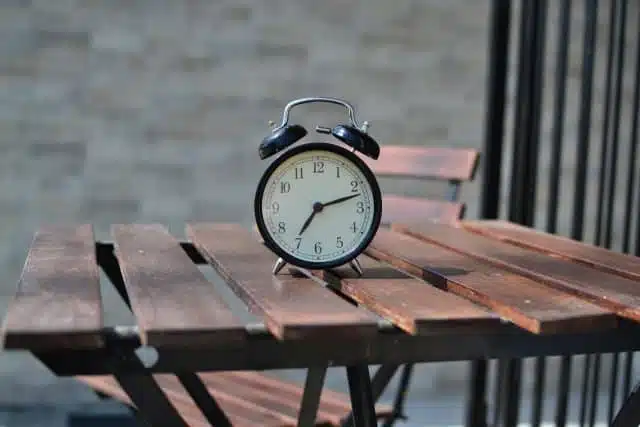Daylight savings time is like the classic, bank savings account. It was a great idea decades ago but the benefits are more illusory than real today. Daylight saving’s time has come and gone.
Few would say that the classic US bank savings account (with no minimum balances) is a wise investment. Since 2013 these accounts have yielded an anemic 0.18%. Currently, the average percentage yield rate is just 0.251%, well short of the government recognized rate of inflation, and farther still from the actual rate of inflation experienced by those of us whose “shopping baskets” are more realistically impacted by healthcare and educational expenses. The classic savings account, like landlines or that VCR in the basement, is of minimal value.
And so is daylight savings time.
A concept initially implemented by the Germans during WWI, the first US daylight savings law took effect in 1918; it was to be an energy savings measure. By “springing ahead” an hour in April and “falling back” an hour in late October, the country’s energy consumption was supposed to be less than it would have been had the clocks not been so reset. That was always a questionable assumption in lower latitude states, where daylight hours varied little from winter to summer. Then again, in the decades immediately following WWII, the population had not shifted southward. The US was a more rural country and lighting accounted for a large percentage of household electrical consumption. Houses were smaller, too, containing far fewer energy consuming appliances. The concept of daylight savings time had real merit. It did save energy.
Whether daylight savings still saves energy is a matter of great debate. Over the past few years US household energy usage has shifted. Lighting has become increasingly energy efficient. Heating and cooling now account for the biggest portions of home energy use. So, in those areas at the western edge of time zones, where daylight savings makes people wake up at a darker and colder part of the day, more heating is used than it would be otherwise. More importantly, US homes are now filled with always-on, standby devices whose usage does not change with the clocks. Routers, phone chargers, printers, cable boxes, computers, televisions, monitors, coffee makers, electric toothbrushes, tablets . . .. The energy savings analyses have become more complex. Yet, even the most optimistic, recent studies suggest that the benefits of daylight savings are marginal.
So, why does this practice persist? Well, it may not continue in the EU. As of last month, the European Union was proposing to abolish the twice annual clock change. A recent poll found that a vast majority of Europeans preferred maintaining “summertime all year” instead: Meaning that clocks, once moved forward in the Spring would remain fixed, with no further hourly changes.
So far, I’ve heard no US Congressional candidates calling for an end to daylight savings time. Too bad. “Summertime all year round” sounds like a political platform that would appeal to voters from all parties.

Peter has spent the past twenty-plus years as an acting/consulting CFO for a number of small businesses in a wide range of industries. Peter’s prior experience is that of a serial entrepreneur, managing various start-up and turnaround projects. He is a co-founder of Keurig.

